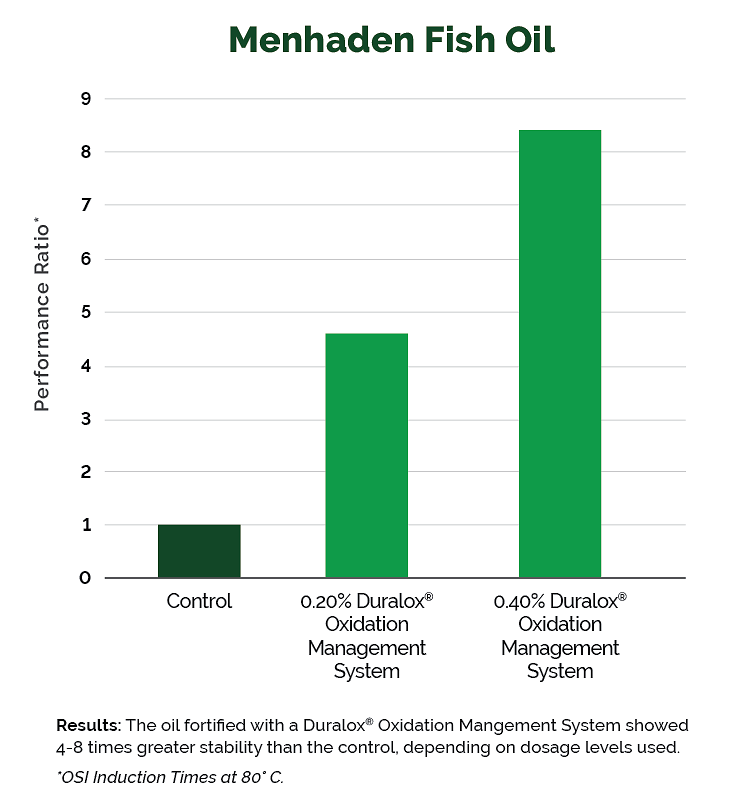Omega-3 fatty acids, especially long chain polyunsaturated fatty acids (PUFA) from fish oil, have gained much attention during the last decade. The global fish oil market size is expected to reach 4.08 billion USD by 2022, owing to an increase in aquaculture activities and consumer awareness regarding health benefits of omega-3 fatty acids.1 From a nutritional point of view, α-linolenic acid (LNA, C18:3) from plant oils, eicosapentaenoic acid (EPA, C20:5) and docosahexaenoic acid (DHA, C22:6) from fish oil are the three most important omega-3 fatty acids.
The potential health benefits of EPA and DHA include a reduction of coronary heart diseases, inflammation, autoimmune disease, neurological diseases (e.g. depression and Alzheimer’s disease) and improved brain development and eye functions in infants.2 The human body cannot synthesize EPA and DHA, and these fatty acids must be obtained from diets such as oily fish, omega 3 rich oils (e.g. fish oil, algae oil and krill oil), or functional food enriched with omega-3 fatty acids. For the general adult population, it is highly recommended to consume at least two fish meals per week or 500 mg of EPA and DHA per day for cardiovascular health (ISSFAL).3
The Use of Naturally Sourced Antioxidants in Fish Oil
Due to the high degree of unsaturation in EPA (five double bonds) and DHA (six double bonds), n-3 PUFA oils are highly susceptible to oxidation. Oxidation of n-3 PUFA not only forms unhealthy degradation compounds (e.g. free radicals and reactive aldehydes) and undesirable fishy off-flavors, but also causes the loss of nutritional value of n-3 PUFA oils. This poses challenges to use n-3 PUFA in pharmaceutical, food applications and the aquaculture industry.
Generally, fish oil is processed from fish or by-products from fish fillet production. Fish oil production processes include cooking, pressing, separating and refining (e.g. degumming, neutralization, bleaching and deodorization at high temperature). During this process, lipid oxidation occurs due to the presence of high temperature, light, trace metal and heme iron (e.g. hemoglobin and myoglobin), especially when by-products are used.
Minimize Lipid Oxidation in Fish Oils
There are a number of strategies to minimize lipid oxidation in fish oils; such as, using fresh raw materials of good quality and low temperature extraction method. Addition of antioxidants is one of the efficient methods to minimize lipid oxidation (e.g. addition of antioxidant as early as possible to fish by-products during its production process to fish oils). BHA, BHT, propyl gallate, TBHQ and ascorbyl palmitate are synthetic antioxidants commonly used in fish oil. However, there is an increasing demand for clean label solutions.
Naturally Sourced Antioxidants for Stabilizing Fish Oils
Examples of naturally sourced antioxidants used for stabilizing fish oils are ascorbic acid, citric acid and its esters, phenolic compounds (e.g. tocopherol, quercetin, rosemary extract and tea catechins). Phenolics are highly effective antioxidants because of their different mechanisms for preventing oxidation. Phenolics can function either as free radical scavengers, metal chelators, or singlet oxygen quenchers. Consequently, combinations of natural extracts can potentially deliver synergistic effects and improve antioxidant performance in preventing lipid oxidation in fish oils.
Kalsec Solution
Kalsec developed Duralox® Oxidation Management Systems, which includes oil soluble antioxidants comprised of rosemary extract, tocopherol and other bioactive compounds to stabilize oils rich in omega-3 fatty acids such as fish oil.

The Use of Natural Antioxidants in Fish
Lipid oxidation and spoilage from microbial activity are major causes of quality loss in seafood. During postmortem storage, enzymatic reactions cause the breakdown of protein to peptides and free amino acids through proteolysis, and lipids to free fatty acids through lipolysis. Free fatty acids, especially free PUFA, are highly susceptible to lipid oxidation. The degree of oxidation in seafood depends on the level of n-3 PUFA, pro-oxidants, endogenous antioxidants (e.g. tocopherol), handling and storage condition.
What Causes Fish to Oxidize?
The presence of heat, light, moisture, metallic ions (e.g. copper and irons) could increase the rate of oxidation in fish. Bleeding resulting from physical damage of fish, cutting and filleting could release heme iron, which is the major factor of lipid oxidation in fish. Discoloration is another manifestation of lipid oxidation in postmortem storage of fish. Red meat of fish (e.g. tuna meat) gradually discolor to dark brown when myoglobin (deoxymyoglobin and oxymyoglobin) oxidize to metmyoglobin, which subsequently promotes lipid oxidation. Lipid oxidation, oxidation of myoglobin and discoloration of fish meat are closely related.
To improve the quality of fish and by-products from fish fillet production for human consumption, lipid oxidation should be mitigated and delayed. Application of antioxidants is one of the strategies to control lipid oxidation and deterioration in fish. Antioxidants could be added directly to fish or feeding antioxidants to fish as dietary supplements.
Kalsec Solution
Kalsec developed Duralox Oxidation Management Systems, which includes water dispersible antioxidants comprised of rosemary extract, tocopherol and other bioactive compounds to stabilize seafoods (e.g. fish and by products from fish fillet production). Learn more about stabilization of fish in a publication by Chalmers University of Technology (Wu, Ghirmai and Undeland, 2020).4
Kalsec Naturally Sourced Antioxidants
The Kalsec line of naturally sourced antioxidants provide an effective alternative to synthetic antioxidants traditionally used in the food industry. It is well known that antioxidants play a key role in maintaining the flavor and color stability of food products, and antioxidants also help protect the nutritional quality of food. With several different naturally sourced options available, these label-friendly products can be used in a large variety of applications to keep your foods looking better, tasting better and lasting longer.
Footnotes:
2. Oxidative Stability of Marine Phospholipids in the Liposomal Form and Their Applications. (F S Henna Lu 1, N S Nielsen, M Timm-Heinrich, C Jacobsen) Retrieved from https://pubmed.ncbi.nlm.nih.gov/21088919/.
4. Stabilization of herring (Clupea harengus) by-products against lipid oxidation by rinsing and incubation with antioxidant solutions (Haizhou Wu, Semhar Ghirmai, Ingrid Undeland, June 30, 2020) Retrieved from https://pubmed.ncbi.nlm.nih.gov/32036181/.